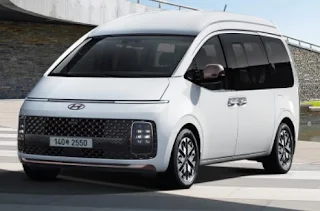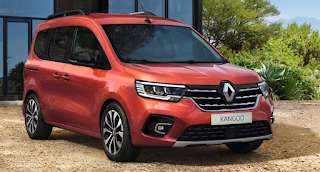The long-awaited arrival of the Hyundai Staria Lounge Limousine promises to pick up where the old Grand Starex Limousine left off in a major way by delivering first-class comfort for wealthy clients from Seoul to Busan while offering the same experiences as its normal equivalent.
 |
| 2023 Hyundai Staria Lounge Limousine |
.jpg) |
| 2023 Hyundai Staria Lounge Limousine |
Starting at 57,920,000 Korean Won plus additional costs, the Staria Lounge Limousine is the replacement for the aging but ultra-luxurious Grand Starex Limousine that promises to pick up where its predecessor left off. Like the normal Staria, it's front-wheel-drive, meaning it's less enjoyable to drive than the old Grand Starex Limousine but who cares. While the normal Staria is built for family use, the Limousine variant is all about catering to celebrities, VIPs, and influencers like a true professional. Whether it's a Blue House politician or a K-celebrity, the Staria Lounge Limousine fits the bill.
For starters, it looks like the Staria Lounge but the Limousine features a high roof, sidestep, and 18-inch wheels, making it easier to differentiate it from the normal Staria Lounge, although it still looks regular when parked in fancy hotels. As for the interior...
.jpg) |
| 2023 Hyundai Staria Lounge Limousine interior |
.jpg) |
| 2023 Hyundai Staria Lounge Limousine interior |
...it still packs the same minimalist dashboard as the normal Staria Lounge but the Limousine is loaded with luxurious features that will keep them occupied such as a movable console positioned between the second-row ottoman seats, a starry sky lamp above, and a rear entertainment system where you can screen mirroring stuff with your smartphone and others. It is offered in a choice of either a seven or a nine-seater.
The Staria Lounge Limousine is available only with a 2.2L VGT diesel engine that produces 177PS of power and 44kgf-m of torque. Mated to an 8-speed automatic, it has a combined fuel economy of a questionable 10km/L.
As expected, the Staria Lounge Limousine is prepared for the worst thanks to Hyundai's Smartsense range of safety tech.
The Staria Lounge Limousine is the ideal alternative for the now-defunct Toyota Alphard Royal Lounge because even though the Alphard trumps the Staria Lounge Limousine, it's going to be the next favorite for those who are looking for luxury minivans.
Before you ask, no. As of now, the official Hyundai distributor in the Philippines, HARI, has no plans to introduce the Staria range at the moment, although smugglers managed to smuggle the Staria without HARI's consent, giving headaches to the Bureau of Customs trying to catch the smuggled luxury cars scattered across Philippine roads. Unless HARI decides to bring the Staria to the Philippines to replace the Grand Starex, don't even try smuggling this Staria to the Philippines or the Bureau of Customs will crush it for sure.
Photo: Hyundai















































